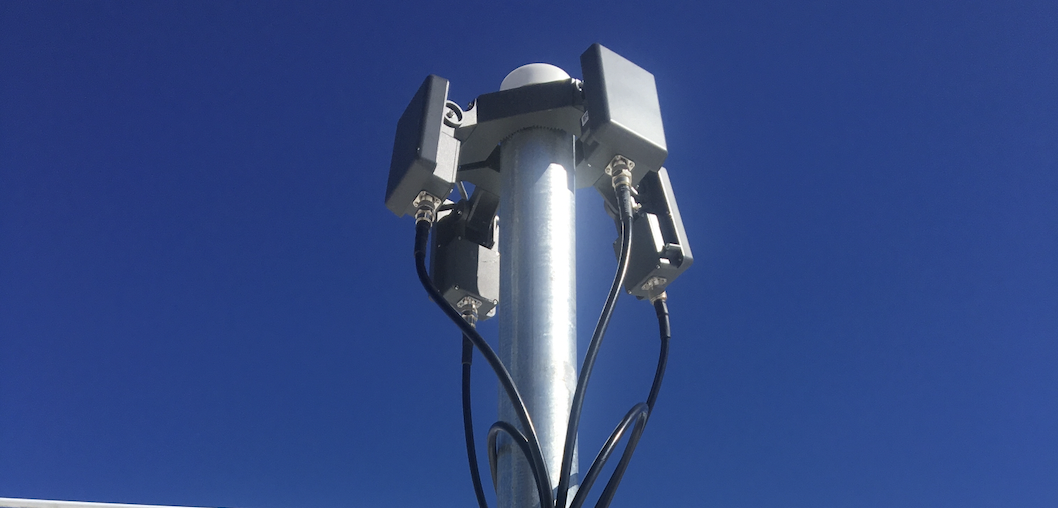In the past decade, drones have transitioned from military assets to ubiquitous commercial tools. While they have revolutionized industries like agriculture and logistics, this accessibility has created a double-edged sword. As noted by security experts, a simple drone is easy to acquire—even for lone-wolf actors—often costing just a couple of hundred dollars online.
For security teams protecting "soft targets", (stadiums, corporate campuses, and public events), the challenge is no longer just about spotting a hobbyist flying too close. The threat landscape has evolved into sophisticated categories of malicious activity.
Here is a breakdown of the types of malicious drones and how Airsight’s Drone Detection comprehensive solution helps you stay ahead of the threat.
1. The Kinetic Threat: Physical Attacks and Disruption
The most immediate fear regarding malicious drones is their potential for physical harm. Drones can be weaponized to carry explosives, chemical agents, or simply used as projectiles to crash into critical infrastructure.
-
Targeting Soft Targets: Terrorists and criminals are increasingly viewing "soft targets" (concert venues, churches, and schools) as viable options because hard targets (military bases) have hardened their defenses.
-
Infrastructure Disruption: It doesn't always require a payload to cause damage. In 2018, the mere presence of unauthorized drones at Gatwick Airport caused the cancellation of hundreds of flights, costing millions in financial losses.
How AirGuard Responds: To counter physical threats, early detection is critical. AirGuard’s Live Monitoring capability allows you to track the real-time status of drones entering your airspace. By establishing a Detection Zone (primary geofence) and specific Alert Zones (secondary geofences) around critical assets, security teams receive instant SMS or email notifications the moment a breach occurs.

2. The Silent Spy: Surveillance and Reconnaissance
Before a physical attack occurs, there is often a phase of reconnaissance. High-resolution cameras and stability controls make modern commercial drones ideal for gathering intelligence on security rotations, entry points, and VIP movements.
-
Pre-Attack Planning: In the 2019 Christchurch attacks, a drone was used to conduct reconnaissance on the target location prior to the assault.
-
Corporate Espionage: Drones equipped with infrared sensors or long-range zoom lenses can hover outside boardrooms or R&D facilities to capture sensitive intellectual property.
How AirGuard Responds: AirGuard allows you to analyze patterns to detect surveillance. Using the Analytics and Heat Maps features, security teams can visualize where drones fly most often and identify "Pilot Locations". If a specific drone ID repeatedly appears near sensitive areas, you can use the Flagging a Drone feature to mark it as a potential threat.

3. The Flying Hacker: Cyber-Attacks and Spoofing
Perhaps the most insidious threat is the drone acting as a cyber-weapon. These "flying laptops" can land on a roof or hover near a server room to bridge air-gapped networks.
-
Wi-Fi Spoofing and Interception: Drones can carry Raspberry Pis or Pineapple devices to mimic legitimate Wi-Fi networks (Evil Twin attacks), tricking employees into connecting and stealing credentials.
-
GPS Spoofing: Sophisticated attackers can transmit fake GPS signals to hijack other drones or disrupt the navigation of legitimate UAVs in the area.
How AirGuard Responds: AirGuard integrates data from multiple sensors, including RF and Radar, to provide a layered defense. The system provides deep Drone Insights, such as the specific drone model, frequency, and Mac address, helping IT and physical security teams correlate physical drone presence with network anomalies.

4. The Autonomous Swarm: AI-Driven Threats
The future of drone threats lies in automation. While many counter-drone systems rely on jamming the signal between the pilot and the drone, AI-driven drones can fly autonomously without a live link, rendering traditional jamming less effective.
-
Swarm Attacks: Large numbers of drones can be deployed simultaneously to overwhelm defenses.
-
AI Navigation: These drones use onboard processing to navigate complex environments, making them harder to predict and track.
How AirGuard Responds: Against swarms and autonomous units, situational awareness is key. AirGuard’s Playback feature allows teams to review multi-sensor data from past flights to understand attack vectors and flight paths. Furthermore, AirGuard creates a Whitelist of authorized drones, ensuring that in a chaotic airspace, your team can instantly distinguish between friend and foe.

Conclusion: Assessing Your Vulnerability
The barrier to entry for malicious drone use has never been lower, but the cost of ignoring the risk has never been higher. Whether it is a lone-wolf actor conducting surveillance or a sophisticated cyber-attack delivered by air, the threat is diverse and growing.
Security requires more than just eyes on the sky; it requires data. Airsight’s AirGuard provides the intelligence needed to detect, track, and identify these threats in real-time. By creating specific alert zones, tracking pilot locations, and managing drone blacklists, Airsight empowers your organization to turn a vulnerable airspace into a secured perimeter.

.png)









